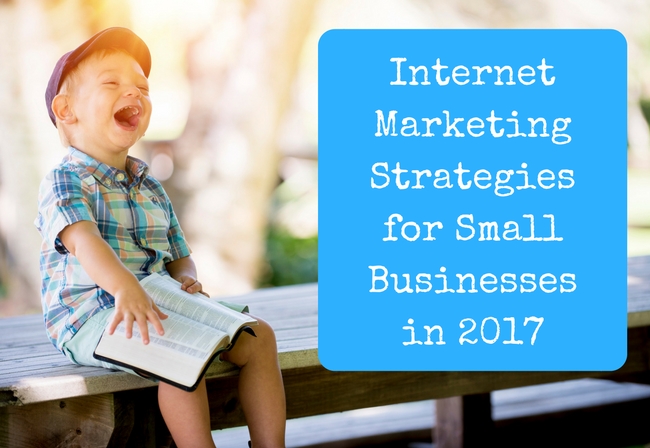 (1)-modified.jpg)
Getting a new visitor to your site is hard. And with the rising cost of acquisition via paid ads and other major channels, acquiring a new visitor has never been more expensive.
Fortunately, however, you don't always have to focus on new visitors.
Instead, focus on bringing those that have already visited before back to your website.
Why are repeat visitors important?
It is unlikely that a new visitor will make a purchase or complete another type of conversion the first time they visit your website.
They're still in the first stage of the buyer's journey: awareness.
They're still browsing and comparing different companies, benefits, etc. And unless you have a great reputation or sell low-value, cheap products, consumers aren't likely to convert on their first visit.
Make no mistake, that first visit is important. Your website has to make a good enough impression for users to remember your brand name, logo, etc. so that they will consider your website when they are ready to buy (hint: consideration is the next part of the buyer's journey).
On the other hand, repeat visitors have already gone through the awareness stage and have likely moved onto the consideration stage. They're more ready to buy the second or third time around and the chance of them making a purchase is significantly higher.
And if they're a repeat customer, they're more than ready to buy (they've already done it once) and will be more likely to advocate for your brand by showing off their purchase, leaving positive reviews, interacting on social, and more.
In short, repeat visitors are important because they are more likely to make a purchase than a first time visitor.
So how do you generate repeat visitors and ultimately, repeat customers? Check out these 9 tips to keep users coming back for more.
9 Ways to Generate Repeat Visitors to Your Website
1. Create a User-Friendly Experience
Imagine you land on a website and it loads slowly and is hard to navigate. Even if it might have what you're looking for, you're probably going to exit within seconds.
This is common consumer behavior.
And the metric used to quantify this behavior is what's known as "bounce rate." Bounce rate is the percentage of visitors who land on a site and then leave ("bounce") without taking any action. Ideally, you want your site's bounce rate to be as low as possible.
You should aim to keep your bounce rate below 40%, meaning that over 60% of visitors engage with the website.
And if visitors bounce on their first visit, they're probably not going to visit again. Almost 90% of website visitors are less likely to return after a poor experience.
So how do you make sure that your website provides a good user experience (UX) to keep visitors coming back?
Make it Fast
Speed is one of the most important UX factors. Research shows that almost 40% of visitors will stop engaging with content if the website or images take too long to load.
The quickest way to improve page speed is by optimising your images. Image optimisation reduces image size by as much as 80% without sacrificing quality. And with a smaller file size and fewer resources to load, your load time will decrease.
Users are more likely to engage with a faster website, meaning more time spent on-site and lower bounce rates.
Make it Beautiful
It goes without saying, nobody wants to use a boring, colorless website.
Use colour themes, (optimised) images when appropriate, and fonts that are easy to read.
Make it Navigable
A beautiful website is great. A beautiful website that is difficult to read and even harder to navigate, not so much.
Highlight the most important elements in your main menu, use colour contrast to make CTAs stand out, and provide users with a sitemap for further navigation help.
Make it Useful
A lot of people can design a fast and beautiful website, but they forget to make it useful.
Your site shouldn’t be about how great you are—its purpose is to solve your customer’s problems or needs.
Users don't care about your brand. They just want to know how you can solve their problems.
Moreover, visitors who reach your site via a search query (e.g., ‘web design Christchurch’) want to see a site that matches their search intent, otherwise they’ll leave instantly (increasing bounce rate).
2. Offer a Valuable Customer Opt-In
Turn first-time visitors into repeat visitors through opt-ins. Display an email opt-in at the bottom of your website and experiment with pop-ups.
Some users and web designers alike find pop-ups distracting. But combined with a valuable offer, they're one of the best ways to capture customer information and bring visitors back to your site.
For small businesses, a free offer (10% off their first purchase or access to an upcoming event) in exchange for a user’s email address is a great way to build up your mailing list.
From there, you can use emails to nurture them along the buyer's journey and offer them exclusive discounts to encourage purchases.
3. And Then Reward Them
Generate more repeat customers by rewarding them for their loyalty.
Whether it’s a points scheme, discounts, or free shipping, consumers want to feel as if they’re being rewarded.
And whether you’re using email marketing, SMS marketing, or social media to capture first-time customer information, it’s vital to get these customers returning to your website.
Encourage them with exclusive offers, early access to new products, exclusive events, and more.
4. Manage Customer Feedback
Whether it’s positive or negative feedback, customer feedback needs to be addressed.
Positive reviews are great, and should be celebrated. But negative reviews are equally as important.
If one of your social media followers comments something positive under a recent post, a simple “Thank you!” reply will have them coming back for more. The same goes for product or service reviews left directly on your website.
In the case of negative feedback, it is important to address not only the issue at hand, but to learn if there are bigger issues within the business as well. The last thing you want is one negative comment to turn into another without being addressed.
To stick with the social media example… if a customer comments something negative under a recent post, politely direct message them to resolve the issue and ask them if there’s anything you can do to ensure a more positive experience in the future.
On your website, having a live chat is a great way to monitor feedback.
It’s important to understand that customers may want to communicate differently as well. Some may prefer to resolve issues via live chat, while others may prefer to speak directly with customer service over the phone, or via social media.
Regardless, make it easy for your customers to communicate with you, and you with them. Give them options.
5. Update Your Website with New Content
A website that isn’t updated frequently is a turn off for repeat visitors.
Keep your website up to date with fresh blog or vlog posts and other news related to your company, and promote them to your customers through your marketing channels.
If you post infrequently, don’t display the date of your post—it’s a dead giveaway for out-of-date content.
6. Build a Social Community
Users don’t just browse; they want to connect, share, comment, and engage with other visitors.
You can generate more leads by growing your website into a community where users can contribute. Allow people to comment on a forum and you can be sure they will return to your site to check for responses.
If you operate an eCommerce website, wish lists allow visitors to interact with your site and offer you a golden opportunity to ‘re-market’ to them when the product becomes available or on sale.
BONUS: Setting up email or SMS triggers for abandoned shopping carts is a great way to bring users back to your website and complete a purchase.
When adding social media links to your site, the Follow button is more powerful than the Share button for generating repeat visitors. A user may share your web page or product once, but a user who follows you will receive ongoing exposure to your business.
7. But Wait! There’s More!
Page elements such as Related Posts, Recently Viewed, or Recommended Accessories are simple but effective devices for extending visitor browsing time and delivering a more personalised experience to the user.
8. Retarget Visitors on Google and with Paid Social
When users visit your site but leave without making a purchase or leaving contact details, all is not lost.
Retargeting ads on Google and social media platforms make it easy for your brand to stay front of mind even if they left your website once.
9. Know Your Audience
Your site needs to cater to both new and returning visitors, two subtly different audiences.
New visitors may not know much about your product or even your industry, so options like a Start Here or a Most Popular section on your site can provide a useful entry point for them.
Returning visitors are likely to be knowledgeable about your site, so you need to keep them engaged with fresh content.
Be the first to post new information relevant to your industry and build this into your mailing list and social media campaigns, to encourage these users to return to your site.
If you’d like to discuss how you can generate more repeat visitors, we're experts. Contact us today!













 (1)-modified.jpg)


